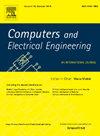Fused multi-level attention features with a constraint fusion network for colorectal tissue classification using histopathological images
IF 4
3区 计算机科学
Q1 COMPUTER SCIENCE, HARDWARE & ARCHITECTURE
引用次数: 0
Abstract
Colorectal cancer (CRC) has a significant mortality rate and continues to damage human lives around the world. Early diagnosis/identification of CRC helps to lengthen human life and detour infection. Histopathological examination is a standard method for diagnosing and detecting CRC. Visual inspection of histopathological diagnoses takes longer, and the outcome is based on physicians’ subjective perceptions. Current approaches mainly rely on various varieties of texture characteristics. Moreover, deep learning methodologies’ categorization efficacy surpasses that of medical practitioners. Nevertheless, elevated complexity would diminish the practicality of these strategies. This study employs a unique method known as fused multi-level attention features with a constraint fusion network (FMANet) for accurately classifying colorectal tissue using histopathological images. FMANet comprises modified dilated residual inception feature extraction, channel-wise, and spatial attention components. These components assist in extracting the most pertinent and prejudiced characteristics from the low-level (LL) and high-level (HL) features in the HIs. The constraint fusion technique is employed to weigh and fuse LL and HL attributes adaptively. The proposed model is evaluated by the number of parameters, accuracy, precision, recall, F1 score, and area under the curve. Moreover, the proposed FMANet attained an accuracy of 95% on the colorectal histology dataset and 97% on National Center for Tumor-CRC-hematoxylin & eosin-100K. The proposed method outperforms ten state-of-the-art algorithms on two datasets, as a result, it is believed that this strategy has great potential to aid physicians in clinical diagnoses and reduce the number of experiments by using computer-aided diagnosis to classify CRC cells. The complete system’s source code will be accessible at https://github.com/KarnatiMOHAN/FMANet_colorectal-tissue_classification.
求助全文
约1分钟内获得全文
求助全文
来源期刊

Computers & Electrical Engineering
工程技术-工程:电子与电气
CiteScore
9.20
自引率
7.00%
发文量
661
审稿时长
47 days
期刊介绍:
The impact of computers has nowhere been more revolutionary than in electrical engineering. The design, analysis, and operation of electrical and electronic systems are now dominated by computers, a transformation that has been motivated by the natural ease of interface between computers and electrical systems, and the promise of spectacular improvements in speed and efficiency.
Published since 1973, Computers & Electrical Engineering provides rapid publication of topical research into the integration of computer technology and computational techniques with electrical and electronic systems. The journal publishes papers featuring novel implementations of computers and computational techniques in areas like signal and image processing, high-performance computing, parallel processing, and communications. Special attention will be paid to papers describing innovative architectures, algorithms, and software tools.
 求助内容:
求助内容: 应助结果提醒方式:
应助结果提醒方式:


